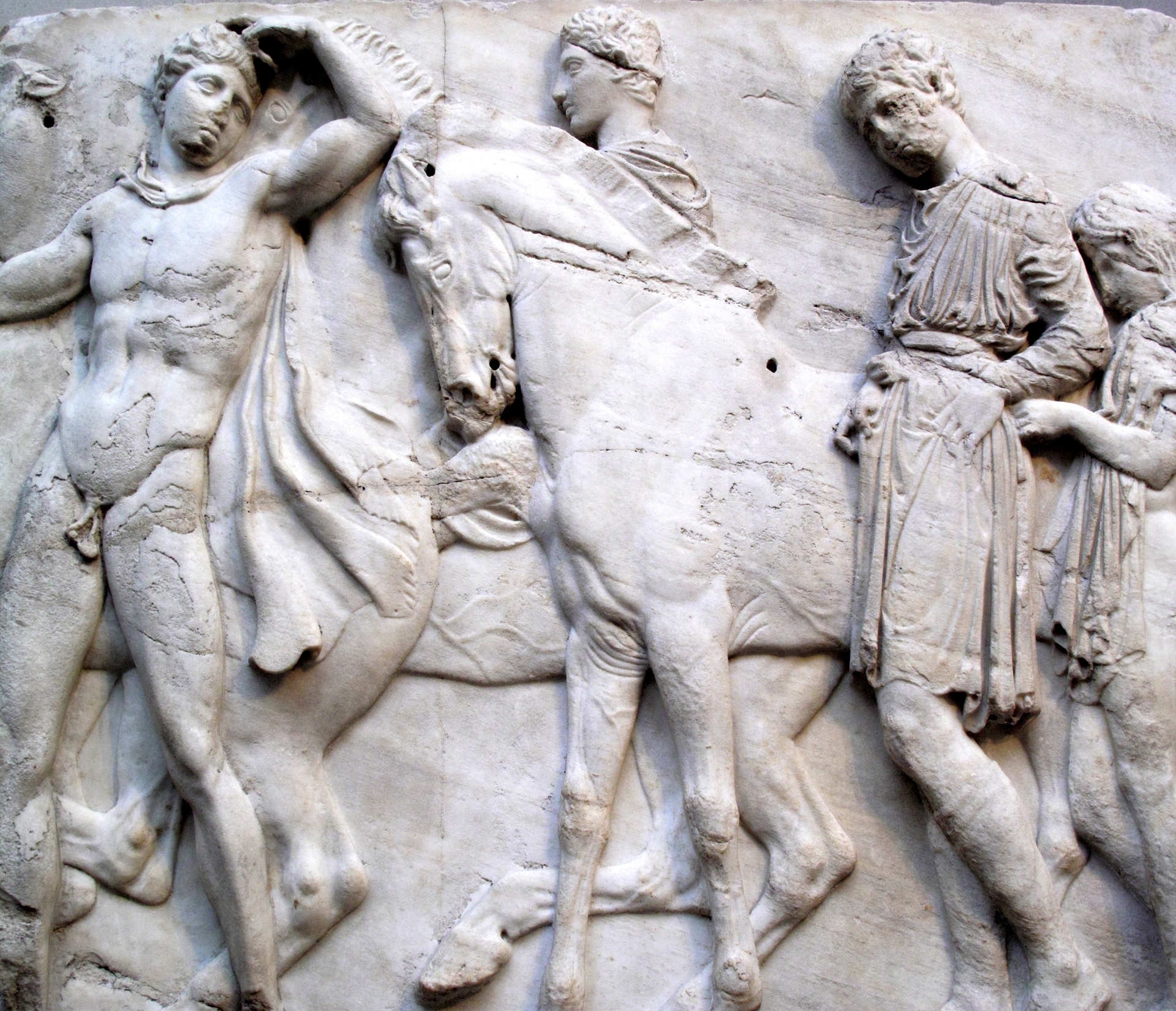Conception
Perhaps our favorite Athenian statesman/orator/general, Pericles commissioned the construction of the Parthenon and other buildings in 447 B.C. The temple was inaugurated in 432 B.C. The complex was conceived to celebrate Athens’s victory in the 50-year war against the Persian Empire. Over the following 25 centuries war, neglect and Athen’s waning power contributed to the structure’s degradation, beginning with second-century Roman visitors carrying off priceless statutes as souvenirs.
Shelling in 1683
An infamous date in the Parthenon’s history was the 1683 shelling of the structure by a combined Venetian-Austrian military force. The shelling crushed the roof of the Parthenon and detonated the large reserves of munitions that the ruling Ottomans had stockpiled in the temple. The Ottomans had optimistically assumed that no European would dare to fire at such an ancient and famous monument. Sadly, they were incorrect.

The Parthenon and the British Museum
Lord Elgin was British ambassador to the Ottoman Empire at the beginning of the 19th century. An avid art collector and lover of the classical world, Lord Elgin launched a single-minded campaign to gather the best of the surviving sculptures from the abandoned ruins of the Parthenon. Close relations with the Turkish authorities enabled him to ship the pieces to London. On their arrival in 1812, the “Elgin Marbles” stirred much admiration but also criticism –notably from Lord Byron, who considered their removal an act of looting. In 1816, deep in debt, Elgin sold his collection to the British government for only £35,000 half his asking price. That same year the collection found its permanent home in the British Museum. Since 1938 it has been displayed in the Duveen Gallery, named after the millionaire art dealer who financed it. The marbles make an impressive sight, and the room is one of the museum’s most visited. However, some consider that it’s time for these and other sculptures held in museums around the world to return to Greece.
19th Century to the Present
In 1832 Greece won its independence from the Ottoman Empire, and since then the nation has taken enormous pains to conserve the Acropolis, considered by all a symbol of their national identity. All the structures built after the classical period have been removed to help restore the site’s dignity. In the 1930s, many of the collapsed columns were reconstructed to rebuild the Parthenon’s imposing outline. Thousands of fragments have been collected from the site and carefully curated. Many are now on display in the Acropolis Museum, opened in 2009, which showcases the long and determined Greek-led efforts at restoration. Inside the museum, there is a large, empty room that has been put aside for the day when the sculptures carved at the height of Athenian democracy will finally come home.